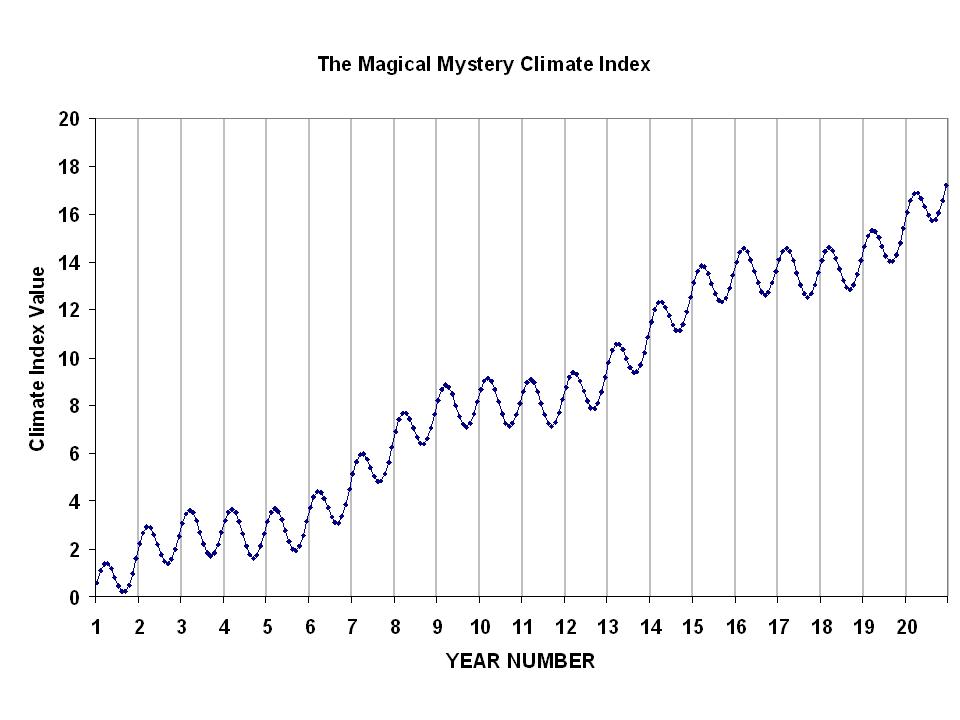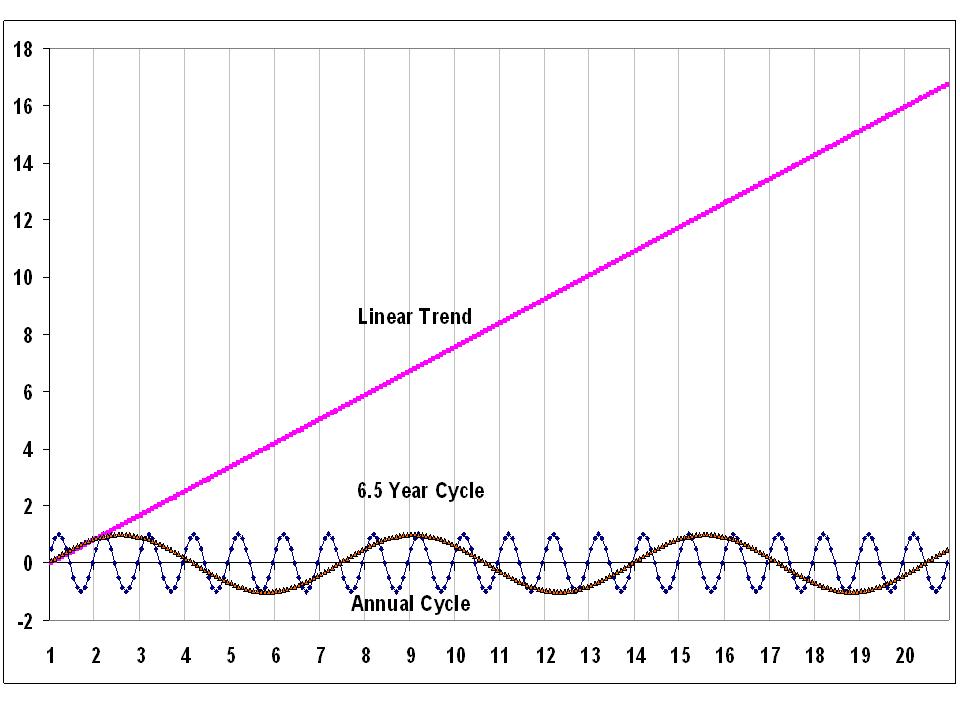In my post from earlier today, I showed the following mystery climate index plot with the challenge to readers to figure out what modes of variability it contained:

Several commenters were actually very close in their explanation…but Luis Salas gave the actual equation to explain the above plot (and it looks like an “honorable mention” for CatJ). It’s the sum of 3 terms: a linear trend, an annual cycle, and a 6.5 year cycle:

Why did I do this? As a couple of people already guessed, it was mostly to show how a linear trend superimposed upon a cycle can yield periods of rapid change, followed by no change, then rapid change once again. In other words, a linear trend combined with a sinusoidal cycle can lead to plateaus.
Is that what is going on in today’s globally averaged temperature? A warming trend with a natural cycle producing our current warming plateau? I don’t know…but I don’t think we can rule it out. If that is what’s happening, then when warming returns it should be about as strong as before. But….
…but a couple people also alluded to another possibility: that what I have shown as a linear trend is (in nature today) just part of lower frequency oscillation…say the ~60 year cycle in ENSO strength, related to the Pacific Decadal Oscillation (PDO). In that case, it would be possible for there to be a long period of downward trend in temperatures in our future.
I’m really not advocating what the forcing mechanisms are: solar, internal variability, etc. I’m just trying to get people to think in terms of these superimposed signals. (Which, of course, are just mathematical simplifications of what could be the net effect of very complex physical processes).
Only time will tell which is closer to the truth, or whether the real situation might be even more complicated that the possibilities listed above…which would not surprise me at all.

 Home/Blog
Home/Blog



